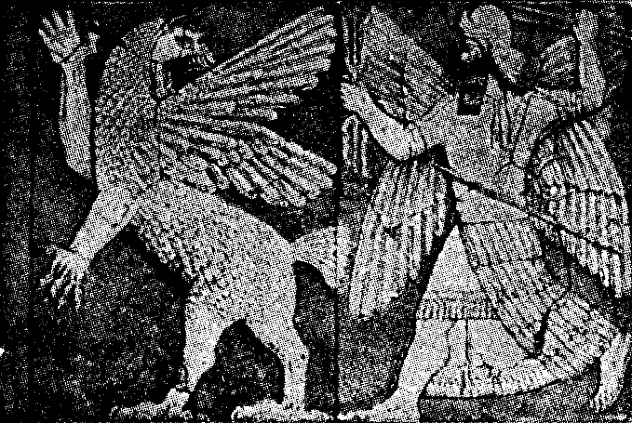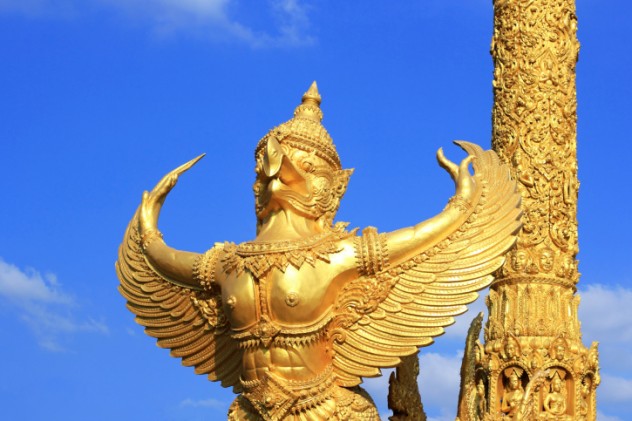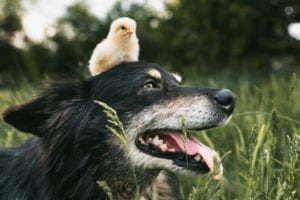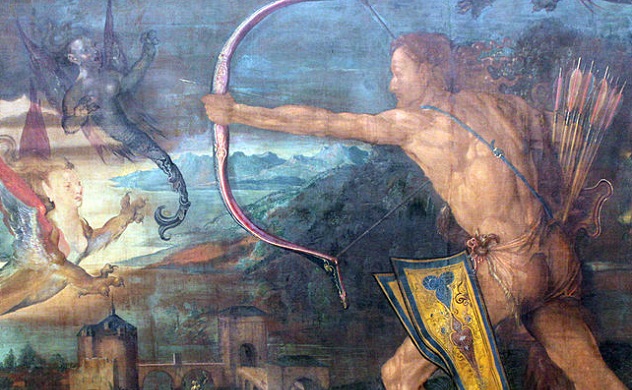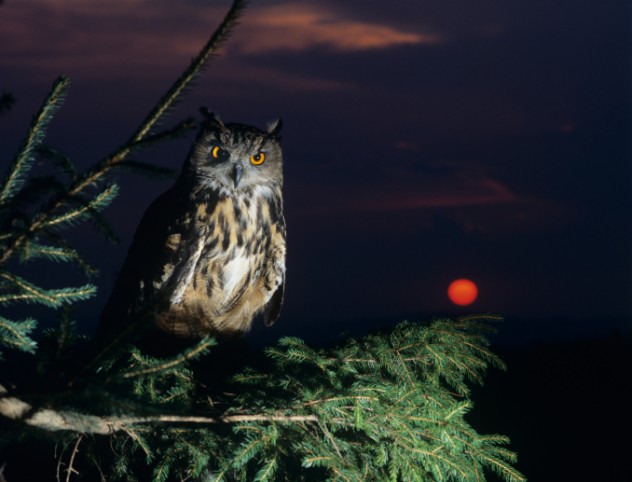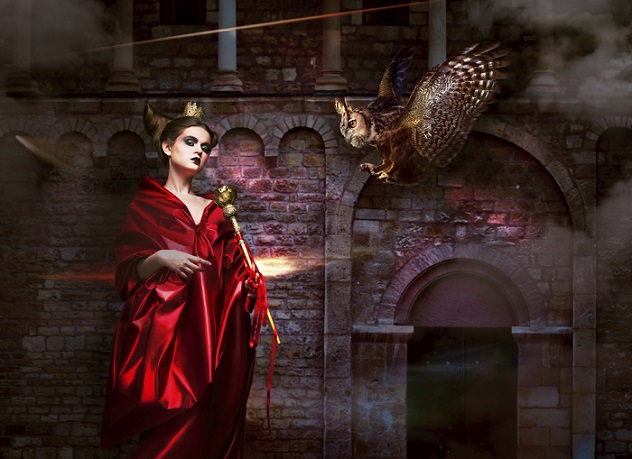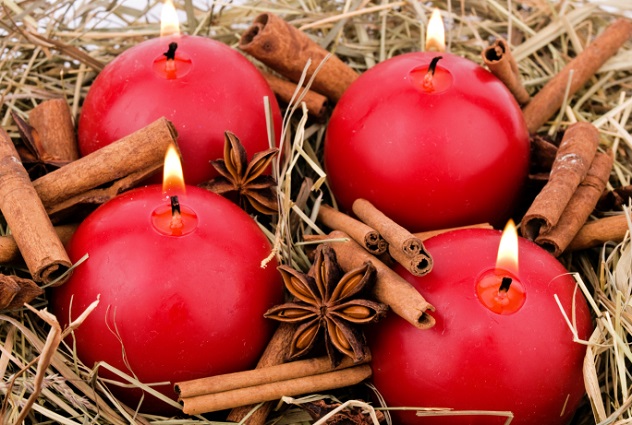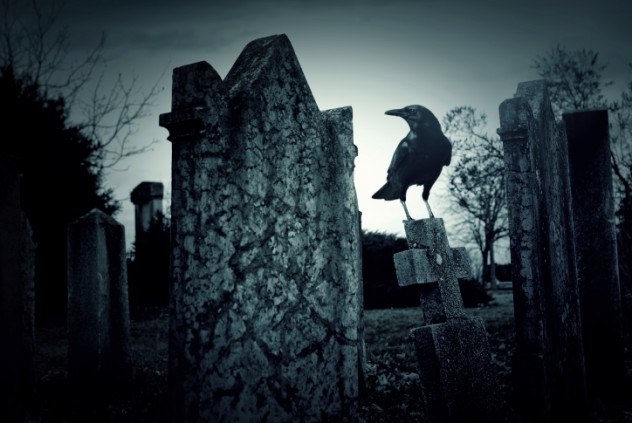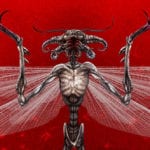10 Benu
The Benu Bird was an Egyptian version of the more well-known phoenix. In Egyptian creation mythology, the Benu bird flew over the surface of chaos, landed, and let out a scream that broke the original primordial silence. This cry was said to decide what would be in this world and what wouldn’t be. Traditionally, the Benu bird closely resembles a heron but has flame-colored feathers and occasionally a human head. It was closely associated with the Egyptian sun god, so much so that the image of the Benu bird came to refer to the sun god himself, often depicted wearing a crown. The Benu bird was said to renew himself every day, rising with the sun and renewing himself in the sun’s rays. His capability to renew himself meant he was also associated with Osiris, the dead, and the ideas of resurrection. The original Benu bird that created the world was born from flame at the top of a Persea tree that stood on the top of an obelisk. Later stories share even more aspects of the phoenix—Herodotus tells the story of the Benu bird living for 500 years before setting itself on fire and being reborn from the ashes. The ashes were then placed on an altar to the sun god.
9 Anzu
Anzu is an ancient Sumerian bird with the body of an eagle and the head of a lion. It was so massive that the only tree big enough to hold its nest was the tree that straddled the seven heads of the river of the sun god, Utu. Anzu’s flight would kick up enormous sand and dust storms, his scream would make the whole world shake, and even the gods viewed him as a nearly invincible threat. According to the legend, the giant bird stole the Tablet of Destinies, which gave him the powers of the gods and power over the mortal world. Enlil, the son of the god Anzu stole the tablets from, is sent into the primordial, partially-created world to stop him and return power to the gods, unleashing floodwaters along with the winds and storms that shape the world. Much later, Assyrian kings were credited with being the ones that had slain the giant bird, allowing for great stories of epic battles to be written about the area’s mortal rulers. Original stories about Anzu are among the oldest known of the “combat myths,” in which a hero is tasked to go off and take on a formidable foe. Anzu and Enlil’s epic has been dated to about 1200 BC. Anzu also shows up in much later folklore in Israel, where sacrifices are offered to appease him.
8 Boobrie
The boobrie is a shape-shifting bird from the mythology and folklore of the Scottish Highlands. Rather than using its wings to fly, it more commonly uses them to swim through the lakes and wells where it hunts. Well-known as a mimic, the boobrie will often imitate the cries of an injured baby animal, grabbing and drowning any adult animal curious enough to come close and investigate. It prefers cattle and sheep but will also eat otters if needed. The boobrie also has the ability to shape-shift into a horse and walk on water in this form, and it can also turn into an insect to suck the blood from horses. There are stories of hunters who have sworn they have seen a water-horse—another mythical creature of Scottish folklore—but upon closer inspection of the tracks left behind, they see the distinctive, antler-shaped tracks unique to the boobrie. According to eyewitnesses, the boobrie has a long white neck, wide wingspan, long beak, short legs, massive partially-webbed feet, and a cry that sounds like a bull.
7 Garuda (Karura)
In Hindu mythology, Garuda is a bird belonging to Lord Vishnu, large enough for him to ride and so brilliantly colored that he’s often mistaken for the god of fire. Even though he wasn’t created as a god, he’s often worshiped as such. He’s also found in Japanese mythology, where he’s known as Karura. Some depictions of Karura show a creature that’s part human and part bird, often having numerous arms, wings, and feathers. Interestingly, some of the Hindu and Japanese images of Garuda and Karura are almost identical. In Japan, he’s almost always shown holding or playing the flute. Garuda usually has the body, arms, and legs of a man and the wings, head, and talons of an eagle, with brilliant golden feathers. Both versions of him represent the king of all birds, and he can fly faster than the wind. Both versions also give him a mortal enemy in the naga–evil, serpent-like creatures that threaten the world’s natural balance. It was Garuda that was responsible for the immortality of the naga. When the naga abducted his mother, he secured her release by trading them ambrosia, and they became an immortal enemy of his.
6 Chamrosh
The Chamrosh is a bird in Persian mythology said to live on the summit of Mount Alborz. It is described as having the body of a dog or wolf with the head and wings of a bird (eagle). It was said to inhabit the ground beneath the soma tree that was the roost of the Senmurv (head of a dog and body of a bird). When the Senmurv descended or alighted from its nest, all the ripened seeds fell to the earth. These seeds were gathered by the Chamrosh, which then distributed them to other parts of the earth. A description of the Chamrosh is in the Persian Rivayats: “The Creator Ohrmazd has produced on the shores of the sea Vourukasha a tree and two birds who are immortal and without death. Every year a thousand new branches spring up from that tree, and all kinds of seeds hang on those branches, and all those seeds become ripe. A bird called Amrosh comes and sits on one of the branches, shakes it, and scatters all the seeds down to the ground. Another bird called Chamrosh comes and strikes all the seeds with its wings and sides and throws them into the sea. All those seeds go inside a cloud full of rain, and that cloud rains on the ground, and all the seeds appear on the earth.”
5 Stymphalian Birds And Ornithes Areioi
The Stymphalian birds, or Stympahalides, were flesh-eating birds from Greek mythology. Killing the birds was one of the labors of Heracles, as they had long been terrorizing Arkadia’s Lake Stymphalis. When he reached the lake where the flock of birds lived, he found he couldn’t get to them without sinking into the swamp. Athena gave him a rattle, though, and the sound of the rattle made the birds take flight. He shot some, and those that flew away resettled on an island. There, they were renamed the Ornithes Areioi and were eventually found by Jason as he was looking for the Golden Fleece. More were killed by the Greek sailors. The birds were originally described as perpetually hungry, carnivorous birds who attacked people and devoured them. They were said to have been raised by Ares and be able to fire feathers from their wings with the strength of arrows. There are different versions of the Stymphalian birds in later myths, including one in which they’re actually temple guardians of Artemis. The only bird-like thing about them is their feet. In another, they’re the human daughters of Stymphalus, killed by Heracles because he believed they hadn’t welcomed him into their home with enough graciousness and honor.
4 Strige
The Strige, or Strix, are creatures also originating in Greek mythology. They eventually became part of Roman mythology and the religious mythology of Europe in the Middle Ages. Originally, they were part of a story about two brothers who were turned into wild animals as punishment for eating another person. One became a strix, condemned to a life upside down without food or drink, whose despairing cries could be heard at night. It’s up for debate just what a Strix or Strige is. In Latin, the word “Strix” can be interpreted as a screech-owl. In some places, the Strix is more commonly associated with vampires or witches. According to some texts, the creature is a bird of prey during the day and a witch at night. It’s the witches that are said to strangle children and drain their blood, but—much like a vampire—an amulet made out of garlic can be placed around the child’s neck to chase away the Strix. In Pliny’s Natural History, they’re described as a real creature, but he also admits that he doesn’t know much about them. In the Middle Ages, they made the jump from classical mythology to Christian mythology when they were said to be servants of the devil.
3 Liderc
The liderc is a creature from Hungarian mythology that looks like a featherless chicken. There are several different types of liderc, and this one is called a mit-make. Closely associated with witches, it’s said that they will simply appear in their homes or hatch from an egg that they incubate beneath their arms. The liderc will act as the witch’s familiar, tirelessly performing task after task for her but ultimately killing her if not kept busy enough. It’s said one of the only ways to keep this from happening is to give the liderc an impossible task, like carrying water in a bucket with holes in it. Another type of liderc is one that has been inspired by the stories of the incubus and succubus. Human in every way except for sporting the leg of a goose, this liderc preys on individuals who lament the loss of a spouse. They appear every night, and their relentless affections will cause the target of those affections to gradually waste away. To get rid of a liderc and prevent it from coming back, steal the shoe or foot it wears on its human foot.
2 Cinnamologus
The cinnamalogus is perhaps one of the strangest explanations for a naturally occurring commodity. As far back as the 5th century BC, cinnamon was a highly desired spice. According to Greek writers like Pliny the Elder and Herodotus, the most valuable cinnamon was that which was gathered by the cinnamologus. Pliny the Elder’s Natural History says that these giants birds build their nests only from sticks of cinnamon that they gather from cinnamon trees. Since they are so high up in the trees and delicate, the only way to get the cinnamon down is to throw lead balls up at the nests to knock the cinnamon sticks loose. The same story is told later by Isidore of Seville in the 7th century, while Herodotus tells a slightly different version of the story of the cinnamologus in the 5th century. According to the historian, these Arabian birds collect the sticks and build their nests high up on sheer rock faces, cementing them in place with mud. Those who are collecting the cinnamon cut oxen and other large animals into large pieces, leaving them at the base of the cliff and enticing the birds to carry them up to their nests. The nests can’t support the weight of the prey and fall, allowing them to collect the cinnamon—and sell it for quite the profit.
1 Hoopoe
The hoopoe is an oddly-named bird that’s both a real creature and the stuff of some conflicting mythologies. In Arab mythology, the hoopoe is regarded as an enlightened bird with healing and water divination powers. It’s also the hoopoe that was said to have rescued King Solomon when he was stranded in the desert, having gathered a flock together to shade him with their wings. In the bestiaries of Pliny the Elder and Isidore of Seville, the hoopoe is told to be one of the few creatures whose young will take care of their elders when they grow old and weak. However, the bird also has a number of other less charming stories associated with it. Isidore says it’s always seen around graveyards. A legend from Eastern European mythology states that when God created the hoopoe, he presented the bird with all the traditional foods that birds tend to like. The hoopoe refused to eat any of them, though, and as punishment, God condemned the bird to forever only eat the excrement of other animals. Read More: Twitter

